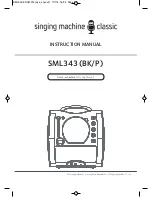
New Cosmos USA, Inc.
Natural Gas Alarm
806NIT
User’s Manual
This manual has been prepared for the 806NIT Gas Alarm
(“Gas Alarm”). If you have a Gas Alarm installed in your
house or building, you should read and understand the
important instructions and warnings contained in this
manual and retain a copy for future reference.
When natural gas, which consists primarily of methane, is
present at concentrations of 10% or greater of the lower
explosive limit (LEL) for methane, the Gas Alarm is
designed to activate a gas leak alarm. The gas leak alarm
consists of a flashing red LED light, an audible warning
sound (a loud beep), and a recorded message.
The Gas Alarm is equipped with an Itron Network Solutions
(INS) communications module designed to automatically
send information directly to your gas utility. including
information associated with gas leak alarm activation, Gas
Alarm error, low battery, and end-of-service-life.
DANGER: EXPLOSION, FIRE AND
ASPHYXIATION
Natural gas leak alarm indicates an emergency
situation and risk of explosion.
•
EVACUATE IMMEDIATELY and take others with
you.
•
Do NOT use a phone, light a match, or turn on or
off any light switches, flashlights, or appliances.
Doing so could IGNITE a FIRE or EXPLOSION.
•
CALL 911 once you are safely outside the
premises.
•
Do NOT re-enter until told to do so by
authorities.
DANGER: ELECTROCUTION
Do not subject the Gas Alarm to water or liquid by
submerging it, spraying liquid on it or otherwise.
Do not disassemble.
DANGER: EXPLOSION
This Gas Alarm is designed to act as a continuous
monitor of natural gas that reaches the sensor.
This Gas Alarm should not be used as a short-
term testing device to perform a onetime check
for the presence of natural gas, as plugging the
battery into the device in the presence of natural
gas may cause an explosion.
DANGER: FIRE AND EXPLOSION
Improper disposal may result in fire or explosion.
Contact your gas utility to arrange for disposal.
DANGER: HAZARDOUS CONDITIONS
Follow these instructions completely. Failure to
do so may result in an undetected natural gas leak
or other hazardous conditions that may cause
serious injury or death.
DANGER: HEARING DAMAGE
Do not place your ear directly against or in close
proximity to the Gas Alarm when it is alarming.
Such exposure to the audible gas leak alarm may
damage your hearing.
WARNING
•
Do not change the Gas Alarm
’s installation position,
relocate it from where it is installed, or tamper with the
Gas Alarm or its battery.
•
Do not block, cover, obstruct or paint over the Gas Alarm
or its sensor. The Gas Alarm can only detect natural gas
that reaches its sensor.
•
Network or power outages may prevent your gas utility
from receiving or processing automated notifications from
your Gas Alarm, including notifications related to gas leak
alarms. Always follow these instructions, without relying
on such automated notifications.
•
This Gas Alarm will reach its end-of-service-life in
approximately 6 years from the date of installation.
Contact your gas utility for replacement if you observe the
end-of-service-life alarm indicator LED.
•
Do not modify, disassemble, submerge, strike, crush, or
expose the Gas Alarm to high levels of volatile organic
compounds. Doing so may cause the Gas Alarm to
malfunction.
•
Commercially available batteries will not work with the
Gas Alarm. Contact your gas utility to arrange for
replacement.
•
Keep out of reach of children.
•
For indoor use only.
NOTICE
•
The Gas Alarm must only be installed by your gas utility
or an authorized gas utility contractor.
•
The Gas Alarm only detects natural gas. It does not
detect carbon monoxide, fire, heat, smoke, flames,
propane or any other gas.
•
The Gas Alarm is not a substitute for proper installation,
use, and maintenance of natural gas appliances and
piping systems. The Gas Alarm does not prevent natural
gas leaks from occurring, nor can it eliminate any existing
natural gas leaks or problems.
General Description and Intended Use
DANGER
If you smell natural gas, evacuate the area
immediately, then call 911. Do not wait for the gas
leak alarm to sound or for your gas utility to
receive an automated notification.
This Gas Alarm is designed to detect natural gas. Natural
gas is a fossil fuel that is primarily made up of methane. It is
commonly used for cooking, home heating and water
heating. Natural gas is typically supplied through a gas
main and utility service line connected to your home.
Natural gas is odorless and colorless, but has a chemical
odorant (mercaptan) add
ed to it to give it a distinct “rotten
eggs” smell. Even odorized natural gas may not be
detected by smell in an unoccupied space, by an individual
with reduced sensitivity to smell, or in other situations.
Natural gas is a highly flammable chemical compound.
Although it happens rarely, a natural gas leak can occur
inside a house or building. This can be dangerous because
it increases risk of explosion and fire. The Gas Alarm is
designed to activate a gas leak alarm when it detects 10%
or greater of the LEL for methane, which is 0.5% or greater
of methane in air. When the gas leak alarm activates, the
Gas Alarm will
beep 4 times and state “Danger – gas leak
explosion risk
– evacuate, then call 911.”
In the event of a gas leak, you may smell natural gas before
the gas leak alarm is activated. If you smell natural gas at
any time, do not wait for the gas leak alarm to sound or
check for Gas Alarm malfunction. Evacuate immediately,





















